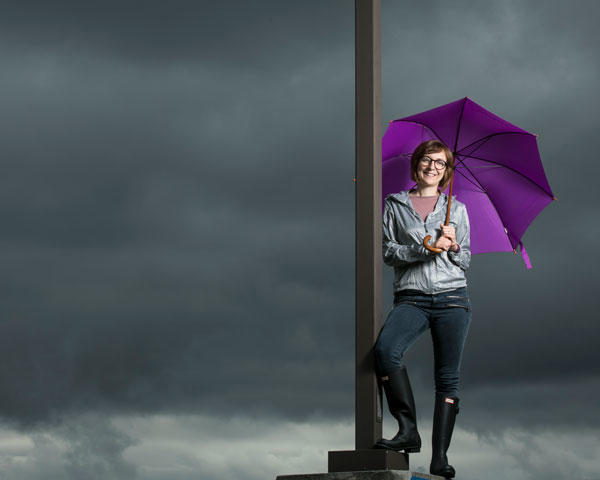Environmental and water resources engineering explores the power of natural wetlands and their vegetation to lessen the energy of storm surge waves to protect coastal communities from sea-level rise during intense hurricanes.
Our researchers use field data and computational models to focus on sustainable solutions to coastal floods. Their areas of expertise include:
Field-based monitoring of Hurricane Storm Surge
We continuously monitor hydrodynamic conditions (waves, currents, and water levels) in the Chesapeake Bay marshes, studying the impact of hurricanes and storms, resulting in more than three years of data to date. In addition to the comprehensive hydrodynamic measurements, our research group routinely performs surveys of bed morphology and vegetation bio-mechanic characteristics such as biomass, stem height, diameter, and densities. Principal investigator: Celso Ferreira.
Numerical Modeling of Coastal Hazards
This research aims to extend our capacity to evaluate how marshes and coastal wetlands can serve as a reliable green infrastructure for protection during extreme weather and conditions that may be a result of future climate change. We accomplish this by using a numerical modeling framework capable of representing this process based on the measured data and state-of-the-art computational tools. Principal investigator: Celso Ferreira.
Natural and Nature-based Defenses for Coastal Resilience
Nature-based defenses for coastal resilience are gaining popularity as an ecological engineering approach to protect coastal communities against flooding and erosion. There remains, however, a considerable gap in accurately determining whether coastal communities can safely and cost-effectively rely on natural and nature-based features for community resilience against flooding under a changing climate, leading to significant inertia towards unlocking the potential of nature to increase society's resilience. Principal investigator: Celso Ferreira.
Remote Sensing Techniques to Estimate and Monitor Hydrological Variables
This research applies remote sensing techniques to estimate and monitor hydrological variables. This work can be applied to water resources management, weather, and climate prediction, as well as agriculture and irrigation practices. The research activities range from the local, through studying the impact of green infrastructure on stormwater at the Fairfax Campus, to the global, using satellite data to evaluate water resources in remote regions, such as High Mountain Asia. The team seeks to improve real-time prediction of rainfall rates in case of extreme events and help remote regions that can't count on local ground instruments, but where environmental and health consequences of natural hazards can be devastating. Principal investigator: Viviana Maggioni.

Associate Professor Viviana Maggioni and her team analyze satellite data to improve the characterization of precipitation around the globe.
